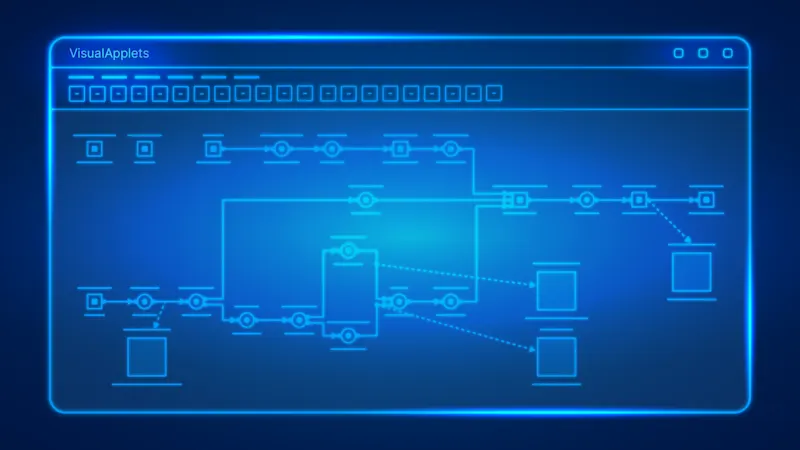Microscopie automatisée pour l’analyse des cellules sanguines à haut débit via CNN
Qu’est-ce que la microscopie à haut débit ?
Quelles classes de cellules sanguines les techniciens de laboratoire observent-ils dans un échantillon au microscope ? Combien y a-t-il de cellules de chacun, et quelles sont leurs tailles et formes ? Les réponses à de telles questions aident les médecins à diagnostiquer des maladies telles que le paludisme, la tuberculose ou les troubles hématologiques-oncologiques. Cependant, un regard à travers un microscope est sujet aux erreurs, prend du temps et est donc coûteux. Un système de vision par ordinateur basé sur un CNN (Convolutional Neural Network) automatise le processus.
Quel est le défi de l’analyse manuelle des cellules sanguines ?
Les analyses de laboratoire des frottis sanguins doivent être fiables, rapides et pourtant peu coûteuses. Tout cela est rendu possible par l’automatisation du processus d’analyse à l’aide d’un système de vision par ordinateur basé sur CNN. Mais les exigences de haute résolution et de vitesse élevée se traduisent par de grandes quantités de données qui doivent être transmises et traitées rapidement.
La solution pour la microscopie à haut débit: l’analyse des cellules sanguines via CNN
Dans notre démo, nous utilisons un CNN pour identifier les genres Plasmodium dans les frottis sanguins, qui peuvent causer la maladie infectieuse du paludisme. CNN classe les Plasmodia dans l’une des sept classes prédéfinies et les compte. Le résultat permet de déterminer de manière fiable la forme du paludisme. Pour résoudre ce problème ou un problème similaire, nous sélectionnerons pour vous les composants matériels et logiciels qui vous conviennent et les configurerons dans un système de vision par ordinateur cohérent.
Le matériel système de cette démo comprend une caméra couleur Boost à deux canaux avec une résolution de 20 MP, un format de capteur de 1,1" et une interface CXP-12. La caméra vous permet de capturer des images à cycle très rapide avec une haute résolution – la base d’une vitesse de balayage élevée ou d’un débit d’échantillons élevé. Le (pré)traitement et l’analyse de la grande quantité de données nécessitent des composants supplémentaires appropriés. Dans ce cas, la carte d’acquisition d’images programmable imaWorx CXP-12 Quad prend en charge non seulement le traitement et l’analyse des images, mais prend également en charge des fonctionnalités telles que l’autofocus à l’aide d’une pré-analyse des données en temps réel basée sur FPGA. Un objectif à monture C et deux câbles de données CXP-12 complètent le matériel du système.
Le logiciel VisualApplets de Basler est utilisé pour programmer la carte d’acquisition d’images FPGA. La configuration et la programmation de la pré-analyse des données, ainsi que l’implémentation du CNN sur le FPGA d’acquisition d’images sont effectuées sur l’interface utilisateur graphique du logiciel. Le CNN est formé en amont du côté de l’hôte. Cependant, le FPGA de carte d’acquisition d’images offre une capacité suffisante pour la mise en œuvre du CNN et permet une inférence haute performance. En fonction des besoins du client, le CNN est soit formé une fois et mis en œuvre sur le FPGA de la carte d’acquisition d’images, soit le client a la possibilité d’adapter le CNN ultérieurement.
Les avantages d’une solution de vision pour la microscopie automatisée
Excellente qualité d’image de l’appareil photo boost grâce aux capteurs Sony Pregius S (par exemple IMX531)
Interaction optimale du matériel, qui génère rapidement de grandes quantités de données et les traite avec des performances élevées (appareil photo CXP-12 de 20 MP et carte d’acquisition d’images)
La pré-analyse des données et l’évaluation basée sur CNN sont effectuées en temps réel avec plus de 900 Mo/s sur la carte d’acquisition d’images, ce qui réduit les exigences du système et les coûts du côté de l’hôte
Grande fiabilité de la classification et disponibilité très rapide des résultats
Produits pour cette solution
Vous cherchez à mettre en œuvre une solution comparable ? Ces produits vous aideront.

